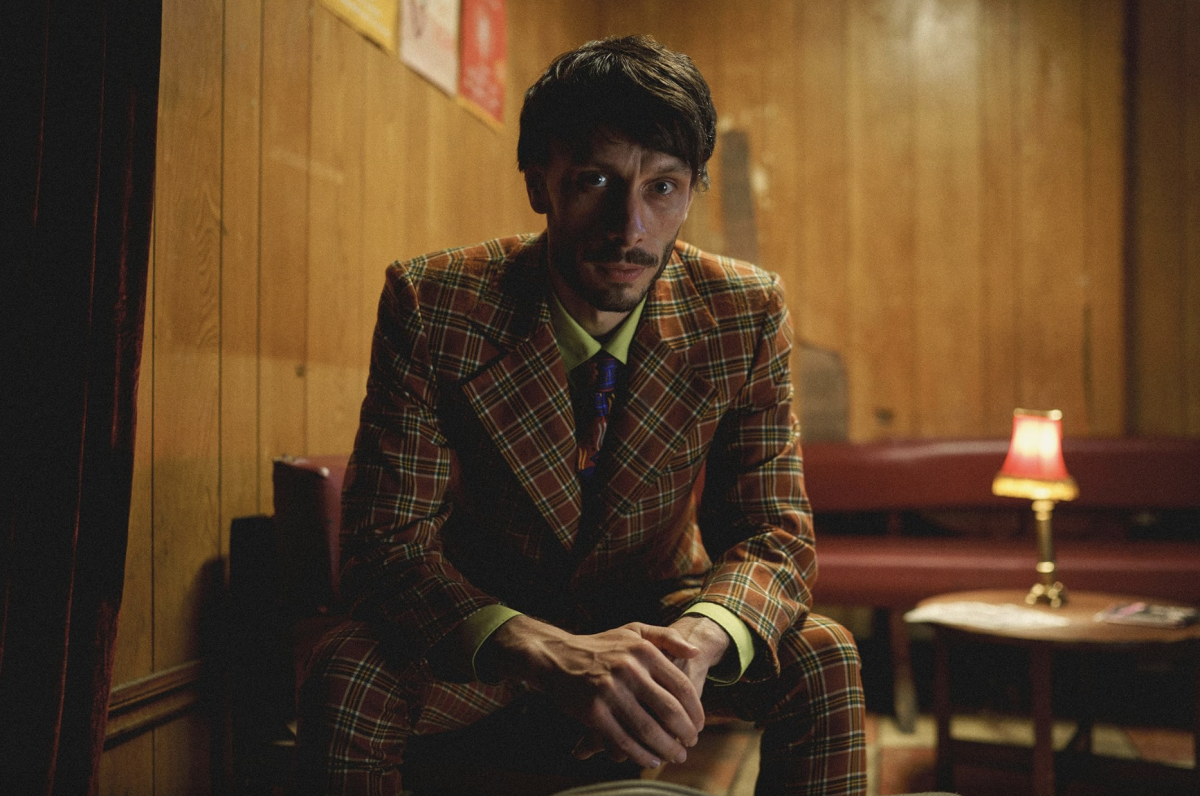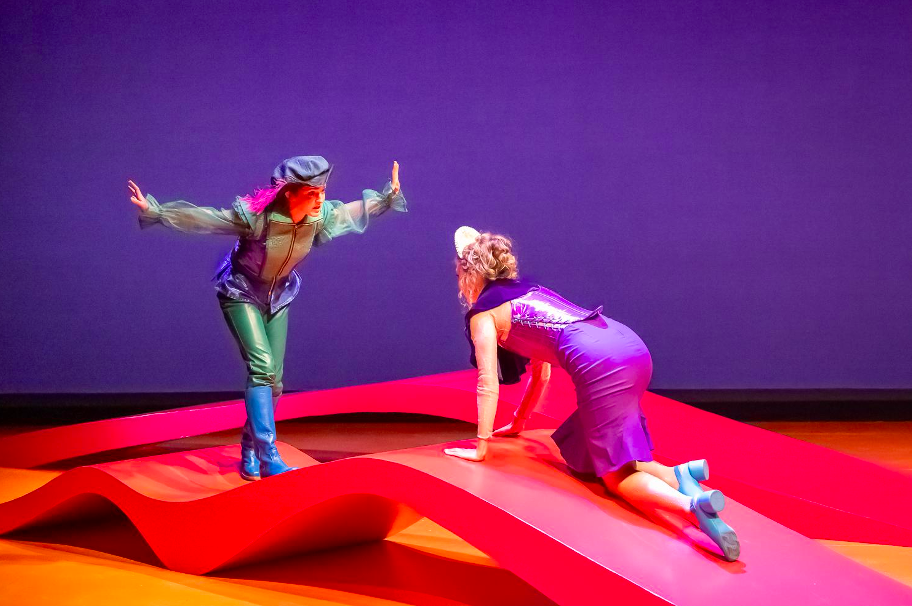People around the world came together in remembrance of the Holocaust on Jan. 27. University of Massachusetts senior and choreographer Leah Calabro, who is graduating with a double major in history and dance along with a minor in Judaic Studies, commemorated this day in her Senior Thesis with a moving performance entitled “A Living Memory,” designed to “remember the past in order to recognize the conditions of our present by using dance to remember the atrocities of the Holocaust and to examine the recent resurgence of Neo-Nazism in today’s society.”
After writing about Jessica Lang Dance’s recent performance at the Fine Arts Center featuring the work “Thousand Yard Stare,” which addresses the effects of combat on military veterans, I felt compelled to reach out to Calabro for an interview to understand her creative process. These two dance pieces address sensitive and emotionally raw topics, and I wanted to know how Calabro conveys bravery, support and advocacy through her art.
The day I talked with Leah, she was outfitted for the dreary (and, as of late, positively mercurial) Massachusetts weather, wearing a long black puffy coat, and black rain boots with her hair simply pulled back into a messy bun. Despite the dampness and clouds, she was remarkably chipper as we walked from the library to the Communication department in the Integrative Learning Center (long story short: no sound booth, no studio, nowhere to record the interview—grr!)
How did you come to this idea of choreographing a dance centered around this topic you chose?
Leah Calabro: Back in high school I did a Holocaust studies trip — I went to Poland and Prague and toured around different Holocaust sites and I was fascinated. This is a weird thing to say [laughs], but I fell in love with the study of the Holocaust. I wanted to incorporate my history major, which is geared toward Genocide Studies and Holocaust studies, into my thesis, so that’s how I fell on the topic.
You mentioned in the program that you like to use dance, or at least in this particular piece, as a tool for social justice. Can you expand on that?
LC: I want to use dance to open people’s eyes to other problems in our society. I feel like we’re so desensitized to what we see in the media, but when you go to see a performance you’re not expecting to be confronted like that. That’s why I feel that a different avenue may be more effective.
That’s a great segue into my next question. You said dance is not as confrontational in bringing up these issues; what else is special about dance that makes it such an important vessel to carry a message for social justice and advocacy?
LC: The reason why I love dance is because everyone sees it differently, and everyone takes away different things from it; it can be a more personalized experience. I feel like it’s a really good way to connect each individual audience member to what’s happening. Because it’s not strict in what it’s saying, you can come away with it with your own personal connection and that’s what makes it so powerful.
What is it that you found that you had a connection with when you made your piece?
LC: I always focus on emotion; I had my dancers read poems and look at pictures of memorials and then we would rehearse and keep that in mind. Because you can really convey a lot in intention, that’s what I try give to my dancers.
Wow! That’s so interesting that you had your dancers look at poems and photos. How immersed do you think your dancers were on the night of the performance? How did that manifest to you?
LC: It’s interesting to watch because I’ll be backstage with them and they’ll all be talking about their days, like they’re not really thinking about what they’re about to do and the second they get into that setting of performance, they really embody the movement. You can clearly see a transformation in their thought process. I’m really happy with my cast selection because I feel like they all did a great job. They all took it to heart, which I really appreciated.
World War II ended about 80 years ago; I want to know how you brought the past into the present in way that’s alive and unique.
LC: I use a lot of testimony, which I think helped a lot. It gave those [who experienced the Holocaust] a voice—like, one of my professors suggested that I read people’s testimonies, but I wanted their own voices to come through. Several of my dancers have Jewish heritage, so it was a really personal experience for them. I just feel like relating it to the situation today and our current society’s [political] climate is really eye-opening. This piece was very timely, for better or for worse.
How do you approach such a sensitive topic? Especially with something, as you mentioned, has resurfaced in today’s society? How do you handle the rawness and emotion of it? And how do you help your dancers deal with that, too?
LC: I feel like I’m very careful. When we’re talking about the Holocaust we’re going to be very educational about it. I’m definitely not a historian of the Holocaust but I talk to them about the things I’ve learned in class. I try to have a lot of open conversations with my dancers, too. I always make sure they’re comfortable with what they’re doing, that they always ask if they have any questions, that we always discuss what we’re doing thoroughly. I try to create a community with my dancers, so I feel like once there’s that sense of camaraderie among them they go through it together. And once they’re comfortable with the subject matter and what they’re portraying it to be, then that creates a level of comfort for the audience, too. You have to create this certain atmosphere in the studio and then that will translate into performance.
Why did you choose “A Living Memory” for the name of your piece? What does this name mean?
LC: [Laughs] I had a hard time coming up with this title. It took me weeks to come up with it! At first, I was really trying to come up with something that represented the past and present; I had this vision that I would have two words, separated by a bracket, but it wasn’t working. Finally, it just hit me: we’re reliving this memory. Yes, it’s a memory, but it’s still alive. Things that we remember from back then are happening again.
And how does that prospect make you feel?
LC: It’s a frustration that we’re in this place but it’s also a frustrating that people are already forgetting. I remember when I visited Majdanek [concentration camp site] on that trip in high school. You walk in, and you can see this suburb next to it, and there’s like, a man walking his dog through the camp—
Through the camp? Isn’t it a protected place?
LC: It’s a historical site, but it’s not gated or anything. It was one of the places on that trip that really hit me. I can’t even put that feeling into words, but I really used that feeling when I was creating my work. Being there and having that feeling and seeing all these people just going on with their daily lives hit me, like “Wow, people are starting to forget. Here we’re falling back into old patterns.” It’s really disheartening to have that realization.
So, you’re clearly very self-aware and driven to combine to your passions together. My final question is, in the future, what do you have in store to combine these skills and passion for future endeavors?
LC: I definitely want to continue with my choreographic work and use my dance education to use dance as a tool for social justice. I’m going to law school next year; I want to do human rights law or international law, and that will be my work life, but I know I want to continue to use dance to support what I’m doing in my work.
Sam Wong can be reached at [email protected].



















